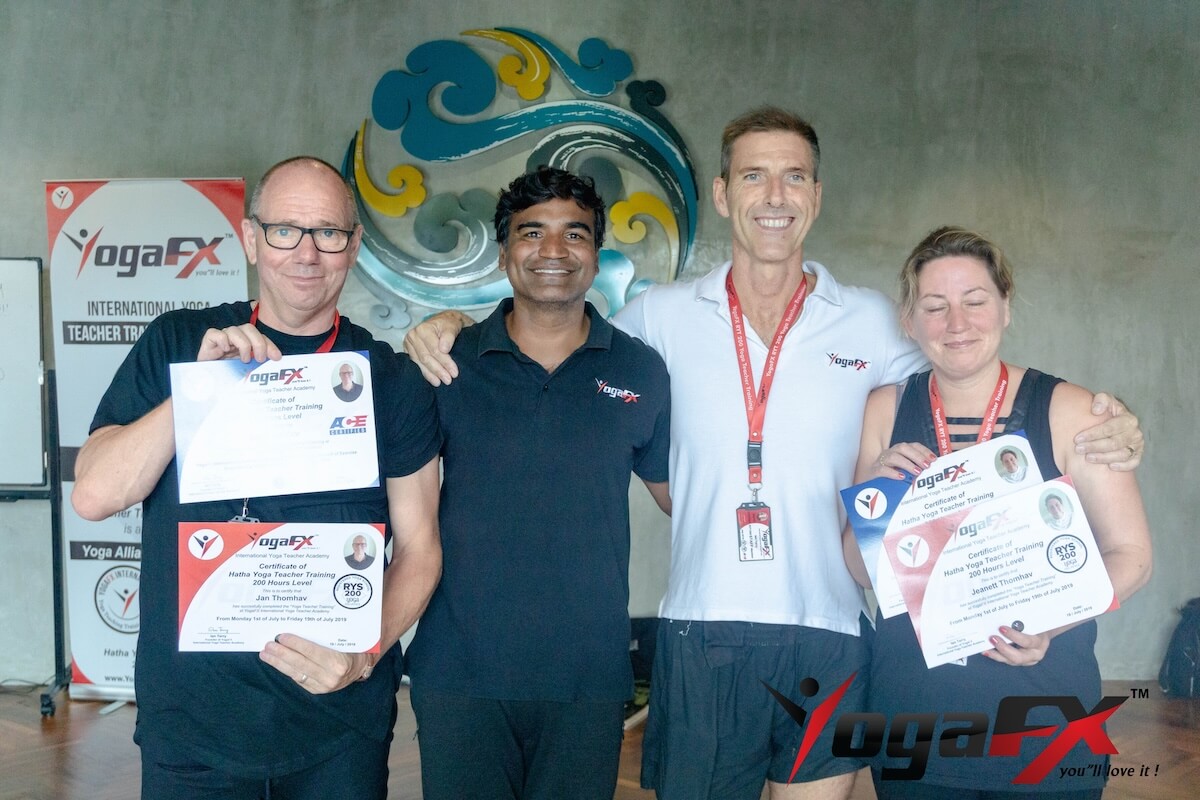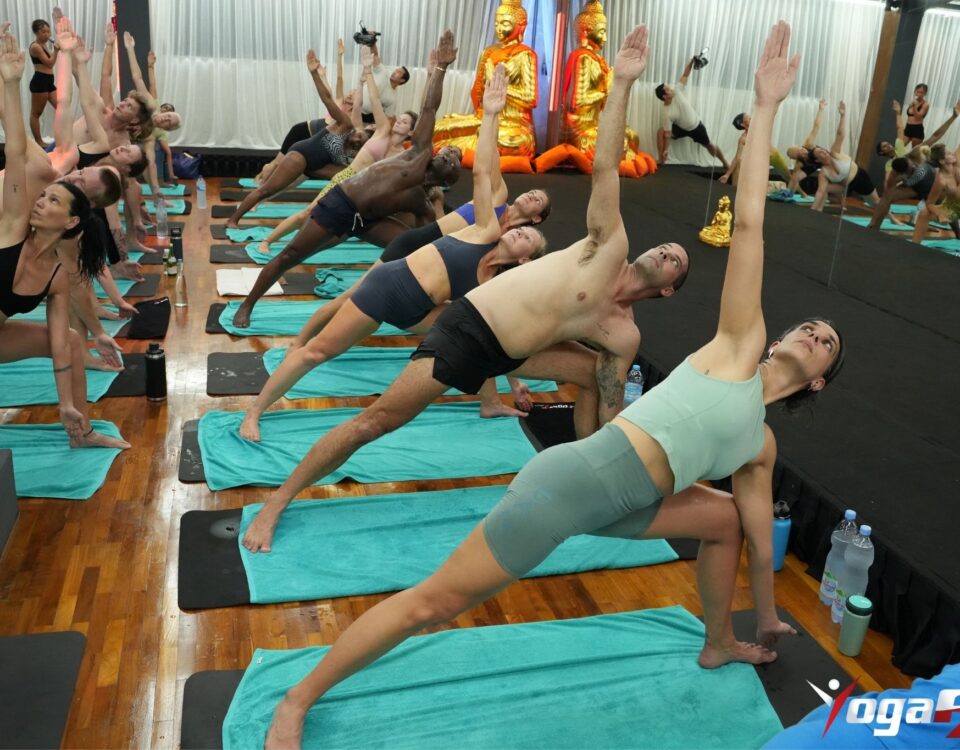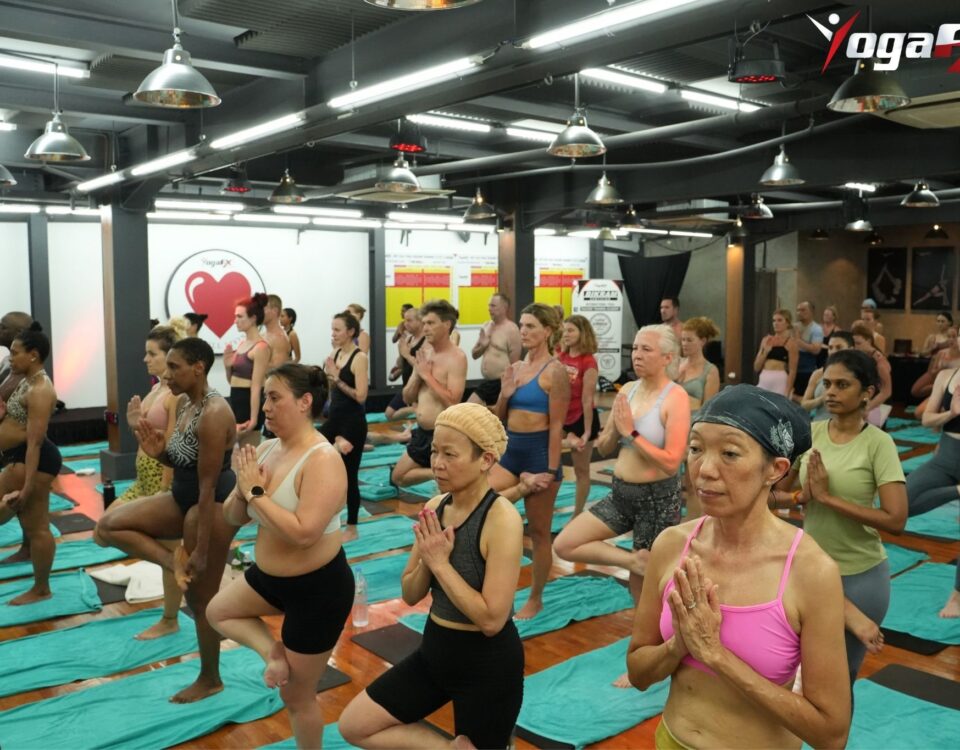
Obtaining a yoga instructor license is the first step toward sharing the transformative power of yoga with students around the world.
As yoga continues to grow in popularity, there’s a rising demand for qualified instructors who not only know the poses but also understand the philosophy, anatomy, and art of teaching.
Gaining a certification with global standards not only builds your competence and credibility but also gives you the skills needed to create a safe, welcoming, and impactful experience for your students.
In this guide, we’ll explore why a Yoga Alliance certification is the top choice, the steps to becoming a licensed instructor, and the exciting opportunities that await you in this rewarding career.
Why You Need a Yoga Instructor License to Teach Properly
Becoming a yoga instructor goes beyond simply knowing poses and sequences—it’s about gaining a deep understanding of how to guide students safely and effectively, helping them get the best from each session.
That’s why a yoga instructor license is essential for anyone looking to teach yoga professionally. This certification ensures you’ve met specific training standards that prepare you to teach with both competence and confidence.
Global Standards and Credibility in Yoga Instruction
A recognized yoga instructor license provides you with a global standard of credibility, which is invaluable in a competitive market.
With a licensed certification, students and studios alike know that your training has covered everything from anatomy to the art of cueing and guiding students safely.
This not only protects your students but also builds trust, showing that you have the expertise needed to support each person’s unique journey through yoga.
The Importance of Recognized Certification Programs
Accredited programs, such as those registered with Yoga Alliance, follow a carefully structured curriculum, covering core aspects like postural alignment, anatomy, physiology, and ethical considerations for yoga teachers.
By choosing a respected certification program, you’re not just learning to teach; you’re learning to create a safe, nurturing environment for students of all levels.
A proper certification gives you the foundation to lead classes, adjust students appropriately, and guide each person toward greater physical and mental well-being.
In short, a yoga instructor license is not just a piece of paper—it’s your assurance that you’re teaching responsibly, ethically, and effectively, offering students the highest standard of yoga instruction.
Why Choose Yoga Alliance for Your Yoga Instructor License
While there are several organizations that offer yoga certifications, Yoga Alliance is widely regarded as the gold standard. It’s globally recognized, widely respected, and ensures your certification will be accepted in studios and wellness centers worldwide. Here’s what makes Yoga Alliance the top choice:
Yoga Alliance vs Other Certification Programs
Yoga Alliance distinguishes itself by focusing purely on teaching standards without the unnecessary burden of academic requirements like diplomas. Unlike other organizations, Yoga Alliance emphasizes the development of practical teaching skills and comprehensive yoga knowledge. This focus ensures that each certified instructor is prepared to lead classes and guide students safely and effectively.
Benefits of a Yoga Alliance License
A Yoga Alliance certification comes with a range of benefits, including:
- Global Recognition: Yoga Alliance certification is accepted worldwide, making it easy to teach in various locations.
- Comprehensive Curriculum: Each registered school must cover topics such as anatomy, yoga philosophy, and teaching methodology, preparing you for the challenges of teaching.
- Access to a Supportive Network: Yoga Alliance provides continuous education resources, industry updates, and a global community for support.
By earning a Yoga Alliance certification, you’re not only developing yourself as an instructor but also joining a network of professionals who share your passion for yoga.
Why Yoga Alliance Certification is Globally Respected
Yoga Alliance is respected because of its commitment to high standards. Every registered yoga school must follow its strict guidelines, meaning you’ll receive a balanced and well-rounded education in yoga. With Yoga Alliance, you can be assured that your training is recognized worldwide, a critical advantage for those seeking to teach internationally.
How to Get a Yoga Instructor License through Yoga Alliance
Becoming a certified yoga instructor through Yoga Alliance involves a structured approach. Here’s a step-by-step guide:
Step 1: Choose a Registered Yoga School (RYS)
The first step is to select a school registered with Yoga Alliance, known as a Registered Yoga School (RYS). Each RYS must adhere to Yoga Alliance’s curriculum standards, ensuring you receive quality training. Choose a school that offers the 200-hour yoga teacher training program, the foundational course for most instructors.
Step 2: Complete the 200-Hour Yoga Teacher Training Program
The 200-hour program covers yoga philosophy, anatomy, postural alignment, breathing techniques, and essential teaching skills. This well-rounded curriculum provides the foundational skills necessary for effective and safe instruction.
Step 3: Register with Yoga Alliance for Your Official Yoga Instructor License
After successfully completing your 200-hour training, you can apply to become a Registered Yoga Teacher (RYT) with Yoga Alliance. This registration not only boosts your credibility but also grants you access to a community of resources, workshops, and continuing education programs.
Step 4: Continue Your Development with Advanced Certification
To further your knowledge and career opportunities, consider advanced programs like the 300-hour or 500-hour certifications. These options allow you to specialize in particular yoga styles and develop advanced teaching skills, opening up new possibilities in your teaching journey.
What it Takes to Succeed with a Yoga Instructor License
Obtaining a yoga instructor license is just the beginning. Being a successful instructor requires dedication, passion, and a unique set of skills:
Key Skills for Effective Yoga Instruction
- Teaching Skills: Clear communication and confidence in guiding classes are essential for effective instruction.
- Knowledge of Anatomy and Alignment: Understanding how different postures affect the body helps prevent injuries and supports each student’s journey.
- Empathy and Patience: A compassionate approach helps build a positive connection with students.
Essential Qualities Every Yoga Instructor Needs
- Adaptability: Each student is different, and instructors need to adjust classes accordingly.
- Commitment to Personal Practice: Maintaining a personal practice keeps your skills and inspiration fresh, which enhances your teaching.
What You’ll Do with a Yoga Instructor License
With a yoga instructor license, your daily responsibilities as a yoga instructor may include:
Daily Responsibilities of a Yoga Instructor
- Preparing Class Sequences: Design sequences that are safe, effective, and tailored to students’ abilities.
- Leading Students Through Classes: Provide guidance and cues for alignment and breathing, creating a supportive environment.
- Offering Modifications and Adjustments: Customize postures based on individual needs, helping each student find their best expression of the pose.
The Role of a Yoga Instructor in Creating a Positive Environment
Instructors set the tone for the class. Creating a space that is safe, welcoming, and calming is essential for a positive yoga experience. A licensed instructor understands the importance of setting a nurturing atmosphere.
Career Path and Progression with a Yoga Instructor License
A yoga instructor license opens doors to various career paths:
Advancing Your Career as a Yoga Instructor
Experienced instructors can lead workshops, specialize in advanced styles, or even become mentors in teacher training programs. Each path offers a chance to expand your impact.
Specializations and Advanced Roles in Yoga Instruction
Some instructors choose to specialize in specific styles such as Vinyasa, Bikram, or Restorative Yoga. Specializing can increase your appeal to students seeking targeted instruction.
Opportunities in Corporate and Wellness Programs
The demand for yoga instructors extends beyond studios. Many corporations offer wellness programs that include yoga, providing additional career opportunities.
Finding Current Opportunities After Earning Your Yoga Instructor License
After earning your yoga instructor license, explore opportunities to gain experience and build your teaching practice:
Job Openings in Studios, Wellness Centers, and Corporate Programs
Studios, gyms, and wellness centers frequently seek qualified instructors. Corporate wellness programs also look for yoga teachers to provide classes for employees.
Freelance and Online Teaching Opportunities
The rise of online platforms has expanded teaching opportunities, allowing instructors to work with students from around the world. Freelance teaching offers flexibility and independence.
Apprenticeships and Workshops for Further Growth
Apprenticeships under experienced instructors and participation in workshops provide valuable hands-on experience, especially for newly certified teachers.
Conclusion: The Value of a Yoga Instructor License for a Global Teaching Caree
A yoga instructor license is more than a credential; it’s a gateway to a rewarding career that allows you to inspire and guide others.
With a globally recognized certification from Yoga Alliance, you’re equipped with the knowledge, skills, and support needed to make a meaningful impact in the yoga community.
Whether you plan to teach locally or internationally, your Yoga Alliance certification provides the foundation for a fulfilling career, helping you share the transformative power of yoga with students everywhere.



